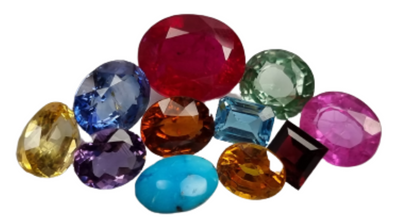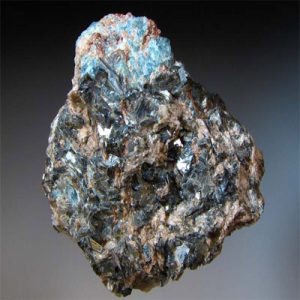Sapphirine: Gemstone Information
Sapphirine is a rare mineral that belongs to the silicate mineral group. It was first discovered in 1837 by French mineralogist Alfred Des Cloizeaux in the Ural Mountains of Russia. The name “sapphirine” is derived from its striking blue color, reminiscent of sapphire, although it can also occur in other colors such as greenish-blue, green, gray, or even colorless. Despite its beauty, sapphirine is not commonly used in jewelry due to its rarity and relatively low hardness compared to other gemstones.
Physical Properties:
Chemical Composition: Sapphirine is a magnesium aluminum silicate with the chemical formula (Mg,Al)₈(Al,Si)₆O₂₂.
Crystal System: It crystallizes in the orthorhombic system, forming prismatic crystals.
Color: Typically blue, but can also be greenish-blue, green, gray, or colorless.
Luster: Vitreous to silky.
Hardness: Sapphirine has a hardness of 7.5 to 8 on the Mohs scale, making it relatively durable but not as hard as sapphire or diamond.
Occurrence:
Sapphirine is found in metamorphic rocks, particularly in high-grade metamorphic environments such as granulite and eclogite facies. It often occurs alongside other minerals such as spinel, corundum, garnet, and quartz. Major deposits of sapphirine have been discovered in regions including Madagascar, Sri Lanka, Myanmar, Australia, and parts of Africa. However, despite its occurrence in these locations, sapphirine remains relatively scarce compared to other gemstones.
Value and Use:
Due to its rarity and limited occurrence in large sizes, sapphirine holds value primarily among collectors and enthusiasts of rare gemstones. Its beauty and unique coloration make it a sought-after addition to mineral collections. However, sapphirine is not commonly used in jewelry due to its lower hardness and the challenges associated with cutting and faceting it into gemstones. As a result, its value is not as high as more popular gemstones like sapphire or ruby.
Market and Pricing:
The market for sapphirine is niche, and its value can vary widely depending on factors such as color, clarity, size, and overall quality of the specimen. In general, smaller specimens or those with less desirable coloration may be more affordable, while larger, well-colored specimens command higher prices. Prices for sapphirine can range from a few hundred dollars per carat for lower-quality stones to several thousand dollars per carat for top-quality specimens. However, it’s essential to note that these prices are estimates and can fluctuate based on market demand and availability.
Conclusion:
In conclusion, sapphirine is a fascinating and rare mineral prized for its beautiful blue color and unique crystal structure. While it may not be as well-known or widely used as other gemstones, its rarity and aesthetic appeal make it a valuable addition to any mineral collection. Despite its relatively lower hardness and limited use in jewelry, sapphirine continues to captivate collectors and enthusiasts alike with its distinct beauty and scarcity in the natural world.





